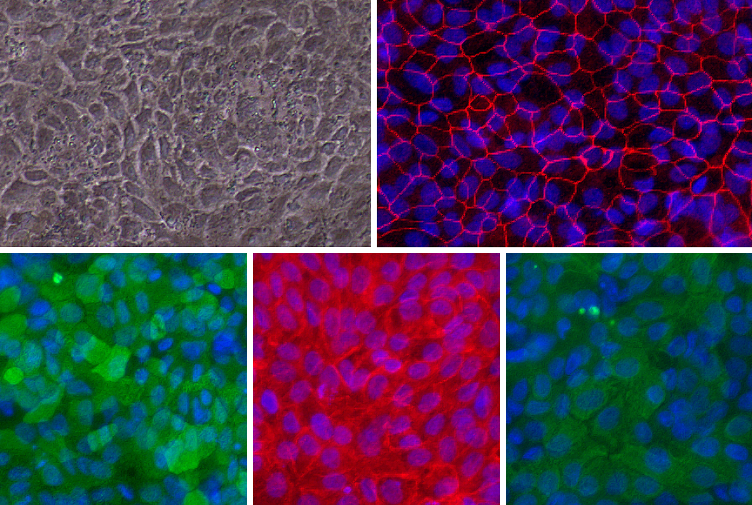The gastric mucosa is the mucous membrane layer of the stomach lumenwhich contains the glands and the gastric pits. The human stomach lumen is lined with a monolayer of epithelial cells. The epithelium constantly renews itself and the stem cells fueling this process reside in the gastric glands. An important function of the gastrointestinal epithelium is to protect from infections, and support a peaceful co-existence with gut microbiota. The gastric pathogen Helicobacter pylori is one of the most common pathogens to colonize the stomach, and chronic infection can lead to gastric ulcers, gastritis, and gastric cancer. Primary human gastric epithelial cells would represent the gastric epithelium closely, but until now no primary gastric culture system exists that enables effective research of gastric diseases and disorders in vitro.
CAI provides a gastric epithelial culture system that results in a gastric epithelial cell monolayer with tight junction that is stable for up to a week in culture. Our system enables investigation of gastric epithelial cell physiology and their response to infection, tight junction function, as well as testing of multiple therapeutic agents for gastrointestinal research.
With optimized, defined culture media from CAI, the Gastric Epithelial Cells can be seeded and maintained for as long as 8 days. Epithelial Cells grown in CAI medium form a monolayer of polarized epithelial cells with tight junction formation as evidenced by Villin (apical marker), Na+/K+ ATPase (basolateral marker), ZO-1 (tight junction marker) and pan-Cytokeratin (epithelial marker) staining.









